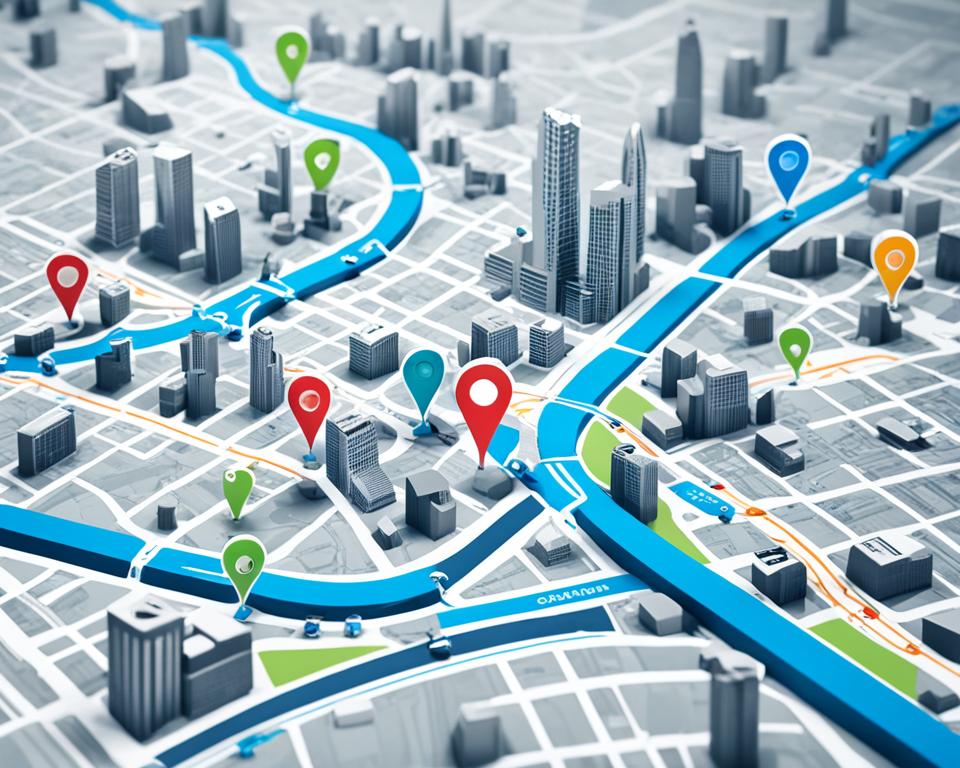Adverts
Artificial intelligence is increasingly present in our daily lives, transforming the way we perform various tasks. Today, There are examples of practical applications of AI in various sectors, as company stock, surveillance cameras, smart TVs, route apps, facial recognition, smart homes, consumer behavior analysis and advertising on digital panels. These applications use technologies such as machine learning and natural language processing to offer more efficient and personalized solutions.
Adverts
Main points of this article
- Artificial intelligence is increasingly present in our everyday lives.
- There are practical applications of AI in industries as company stock, surveillance cameras, smart TVs, route apps, facial recognition, smart homes, consumer behavior analysis and advertising on digital panels.
- These applications use technologies such as machine learning and natural language processing.
- AI offers more efficient and personalized solutions.
Product inventory control in companies
AI is widely used in company inventory control, providing significant benefits for inventory management. The use of intelligent software allows you to efficiently monitor products and automatically update point-of-sale systems. This makes it possible to guarantee the availability of products and avoid missing items on the shelves.
This software uses intelligent sensors to identify empty spaces on shelves and offer stock replenishment suggestions. By analyzing collected data, AI is able to predict future demand and provide valuable information for making decisions related to product replacement and purchase.
Adverts
Furthermore, AI-based inventory control improves product organization, making sellers' work easier. With access to up-to-date information about product availability, sales professionals can serve customers more efficiently and offer personalized service.
The use of AI in company inventory control contributes to cost reduction, increased productivity and customer satisfaction. By avoiding product shortages and optimizing stock replenishment, companies are able to meet consumer demands more effectively, maintaining an adequate level of inventory and avoiding financial losses.
| Advantages of inventory control with AI | Benefits |
|---|---|
| Improvement in product organization | Ease of access and location of items |
| Reduction of product shortages | Availability guarantee for customers |
| Stock replenishment optimization | Resource savings and cost reduction |
| Increased efficiency in customer service | Customer satisfaction and loyalty |
Surveillance cameras
Surveillance cameras with artificial intelligence technology are capable of performing various functions, in addition to recording images for public safety purposes. They can also recognize profiles of wanted individuals through characteristic analysis and issue alerts to police forces. These cameras use AI algorithms to process images in real time and make decisions based on the data captured.
With the integration of artificial intelligence, surveillance cameras are becoming an increasingly efficient tool in combating crime. Through advanced algorithms, these cameras can identify suspicious individuals based on facial features such as scars, tattoos and facial expressions. This characteristic analysis is done in real time, allowing authorities to receive immediate alerts when a wanted individual is detected.
See too:
Additionally, AI surveillance cameras can also be programmed to recognize patterns of behavior, such as suspicious movements or unusual actions. These cameras can identify suspicious activity in a crowd, such as fights or people carrying dangerous objects. This way, authorities can take preventive measures and act quickly to ensure public safety.
The artificial intelligence technology used in these cameras also allows integration with security systems. facial recognition, which can help identify criminals and those wanted by justice. Cameras can compare captured facial features against a database of known individuals, issuing alerts when a match is found.
With these features, surveillance cameras with artificial intelligence technology are proving to be an essential tool in strengthening public security. They help police forces monitor critical areas and prevent crimes, providing greater peace of mind for the population.
Smart TVs
Smart TVs are one of the best-known examples of artificial intelligence in everyday life. They are able to recognize speech and process natural language, allowing users to interact with the TV through voice commands. Furthermore, smart TVs can interconnect with other devices, offering an integrated and personalized experience to the consumer.
With voice recognition technology, smart TVs allow you to control its functions and access content with just simple verbal commands. You can change the channel, adjust the volume, search for specific programs or even request information about the weather or news.
Furthermore, smart TVs can be connected to devices such as smartphones, tablets and smart speakers, allowing for an even more complete and interactive experience. You can play videos or music directly from your device, share content on your TV screen, and even control other connected devices like smart sound systems and lights.
Integration with virtual assistants is also an advantage of smart TVs. With connectivity to assistants such as Amazon's Alexa or Google Assistant, you can control your TV with just voice commands, without the need to use the remote control. Additionally, you can request information, perform internet searches and even control other smart devices in your home, all through your smart TV.
With so many advanced features and features, smart TVs transform the way you interact with your television, providing more practicality, personalization and entertainment in your TV watching experience.
Advantages of smart TVs:
- Control by voice commands;
- Integration with other devices;
- Connectivity with virtual assistants;
- Access to personalized content;
- Interactive and integrated experience.
“Smart TVs transform the way you interact with your television, providing more practicality, personalization and entertainment in your TV watching experience.”
Route apps
Driving apps use artificial intelligence to interpret real-time traffic data and suggest less congested routes for drivers. These apps use a network of mobile devices and satellite analytics to provide accurate information about street traffic. That way, drivers can save time and avoid traffic jams.
Imagine being able to avoid chaotic traffic and get to your destination faster. With route apps Powered by artificial intelligence, this has become possible. These applications use advanced algorithms to analyze and process real-time traffic data, taking into account information such as congestion, accidents, works and events that may affect the flow of traffic.

Through a broad network of mobile devices, these applications collect data from GPS, smartphones and other connected devices, allowing artificial intelligence to analyze and interpret this information. Additionally, they also use satellite analysis to obtain a comprehensive view of street traffic, considering factors such as average vehicle speeds and road conditions.
Based on these analyzes and interpretations, route applications are able to provide drivers with alternative route suggestions, avoiding congested areas and directing them along faster, less saturated paths. This technology allows users to save time on their daily commute, as well as helping to reduce the stress and frustration caused by heavy traffic.
Driving directions apps can also offer additional features, such as alerts about road hazards, points of interest along the way, and information about available gas stations and parking. These additional features make the navigation experience even more complete and convenient for drivers.
Optimizing your route
Using route apps, you can make the most of artificial intelligence to optimize your route. By following the suggestions from these apps, you will avoid major congestion points, saving time and fuel.
“Instead of getting stuck in traffic, you can count on route applications that use artificial intelligence to guide you along the most efficient and fastest route.”
Additionally, these apps can also provide real-time information about delays on your route, so you can make necessary adjustments and avoid mishaps. They are an extremely useful tool for drivers who want to enjoy a smoother and more efficient journey.
Avoid traffic!
It is no longer necessary to face congested traffic every day. With the help of AI-powered routing apps, you can find the fastest and most efficient route to your destination. Save time, avoid traffic jams and enjoy a smoother journey with these apps.
Facial recognition
Facial recognition is one of the most popular applications of artificial intelligence. It is used in various devices for security purposes, personalization and convenience. For example, high-end cell phones such as the iPhone and Samsung Galaxy use facial recognition as a security mechanism to grant access to smartphone resources only to the device owner. Furthermore, Facial recognition is also used in property surveillance companies and to identify criminals.
This revolutionary technology allows you to unlock your phone safely and easily with just your face. No more complicated passwords or fingerprints required. With a simple glance, your smartphone is unlocked, offering a faster and more convenient experience.
Enhanced security across the board
Facial recognition offers an advanced level of security to protect your personal data. By analyzing the structure and unique features of your face, the chances of someone accessing your device without your permission are drastically reduced. Furthermore, this technology is capable of recognizing whether the person trying to unlock your smartphone is really you, preventing forgery and protecting your privacy.
In addition to smartphones, facial recognition is also used in property surveillance companies. Cameras equipped with this technology are capable of identifying specific people, increasing security and helping to prevent crimes. Furthermore, public security agencies can use facial recognition to identify wanted criminals, facilitating capture and making cities safer.
More than just security
Facial recognition goes beyond security. It is also used to personalize the user experience on devices such as cell phones, computers and even online stores. Based on information obtained through facial recognition, these devices can adapt their settings and present personalized content, making interaction more intuitive and satisfying.
The future of facial recognition is promising. This technology continues to evolve and find new applications, such as in the healthcare sector, where it can be used to identify and monitor patients, speeding up and improving medical diagnosis. It is clear that facial recognition is transforming the way we interact with technology, providing more security and convenience in our daily lives.
| Benefits of Facial Recognition | applications |
|---|---|
| Advanced security | Cell phones, property surveillance, identification of criminals |
| Customization | Cell phones, computers, online stores |
| Ease of use | Quick access to devices without the need for passwords |
| Future evolutions | Healthcare sector, medical diagnosis |
Consumer behavior analysis
Consumer behavior analysis using artificial intelligence is one of the main marketing strategies currently used. Using this technology, it is possible to track users' actions in virtual stores and social networks, identifying behavior patterns and generating detailed reports.
Based on this information, companies have the ability to create more efficient and personalized offers and marketing campaigns, providing a unique experience for each customer. By understanding each consumer's preferences and needs, businesses can segment their campaigns more precisely, increasing the chances of success and conversion.
Furthermore, artificial intelligence also plays a key role in content moderation on digital platforms such as Facebook and YouTube. Using advanced algorithms, it is able to automatically detect posts that do not comply with company guidelines, such as spam, hate speech and inappropriate content.
This automated approach to content moderation provides greater security and reliability for users, creating healthier and more pleasant environments on social networks.



